Virtual Reality Training Programme for Prevention of Needle Stick Injury
Reducing needlestick injuries in operating rooms
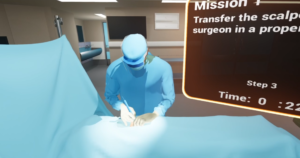
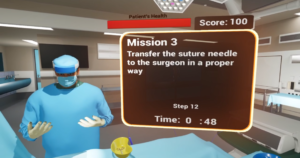
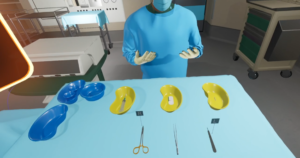

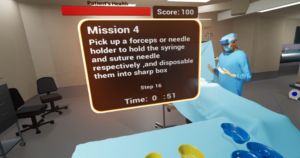

It is a scrub nurse simulation developed in partnership with Kwong Wah Hospital with the goal of reducing needlestick injuries in operating rooms. In 3D and virtual reality environments, participants take on the role of a scrub nurse passing sharps to a surgical doctor. The program’s objective is to protect surgical personnel from needlestick injuries. As a result, the simulation teaches the user how to prevent being harmed by sharps and automatically corrects their errors.
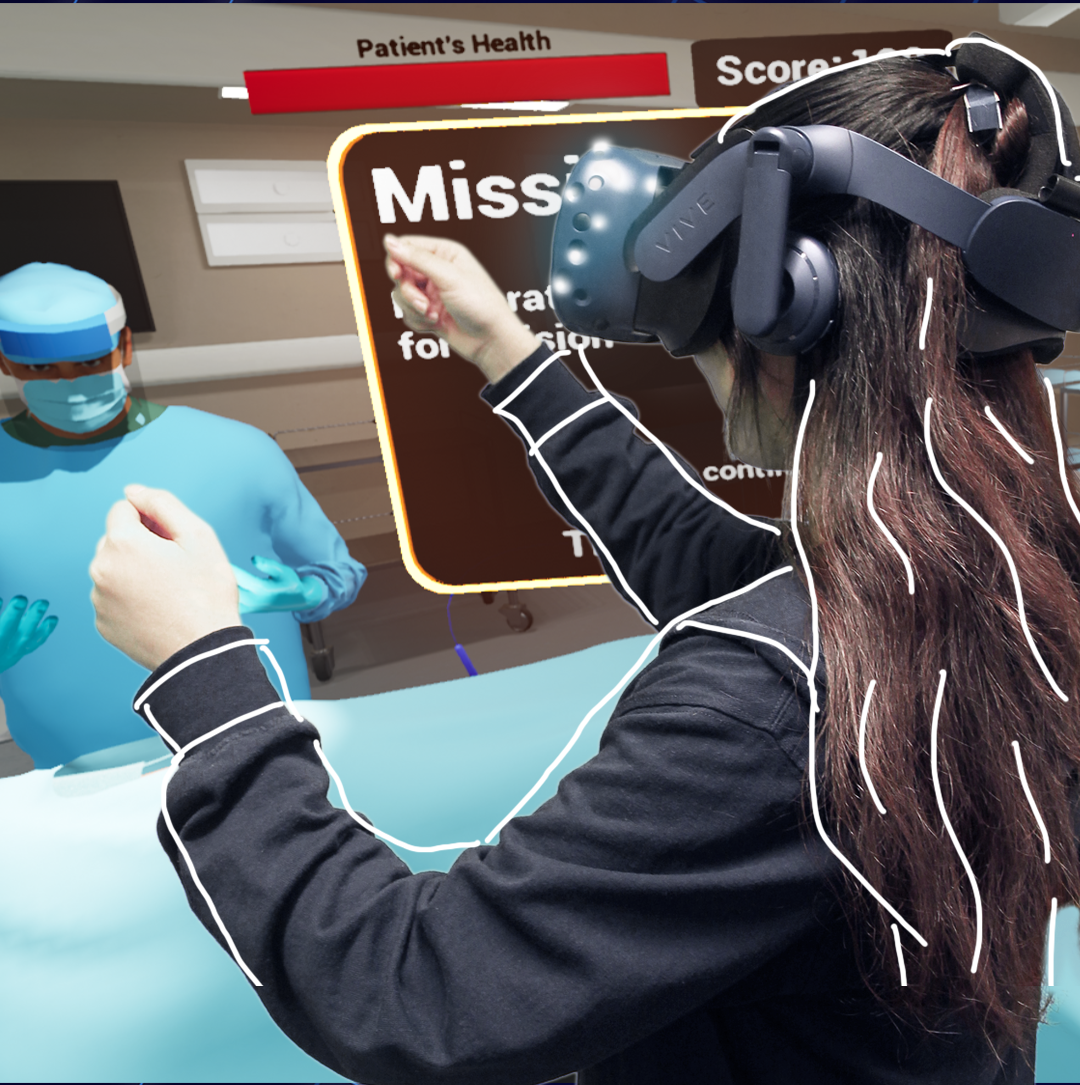
Figure 1
Simulation training has gained popularity in recent years, particularly in clinical training, due to its potential to decrease learning curves and human errors. Virtual, augmented, and mixed reality (VR, AR, MR) technologies are now widely used in many training programs, providing numerous benefits to both academia and industry (Tang, Au, & Leung, 2018). VR is a cost-effective solution for procedural training since its scenario simulation elements allow learners to use it indefinitely. Néophytes can also learn in a realistic setting.
Figure 1 shows the viewport of virtual reality simulation as a participant. A dashboard will guide you through training tasks and a patient’s life score will be reducted if incorrect procedures are performed. Participants are required to use their hands as controller. A hand recognition hardware sensor, called Leap Motion, will capture the hands’ motion and converted into the virtual environment. Tasks from transfering knife in correct direction to surgeon, preparing anesthetic in a needle, holding surgical suture to disposing sharps are introduced in this training.
For user autonomous learning behavior of surgical nursing training, a research model based on past technology acceptance and behavioral science studies was introduced. The Technology Adoption Model (TAM) was utilized to build the model because it is considered as a credible basis for assessing people’s acceptance of new technology. Over the last few decades, TAM has been one of the most prominent theories in forecasting how people would react to new tech The measurement devices’ validity and reliability have been verified previously (Mathieson, 1991; Huang 2016). The original TAM implies that perceived usefulness and ease of use of technology might influence actual behavior and behavioral intention.
Collaborating with






